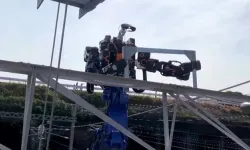In their research, scientists from Tufts University and Harvard University used tracheal cells from adult donors of different ages and genders, CNN reported.
With these cells, the researchers created living tiny robots that are thought to help heal wounds and damaged tissues.
Their work builds on the first living robots, called "xenobots", which they have already managed to produce.
Their ultimate goal is to answer the question of whether anthrobots can be used in medical applications, the researchers said.
In this context, the researchers also examined whether the tiny robots act to "mimic damage" in lab-grown human neurons "harboring abrasions".
The researchers said that the "anthrobots" showed growth in the damaged area of the neurons, although the mechanism of recovery is not yet understood.
TURKISH WOMAN SCIENTIST'S SIGNATURE ON "ANTHROBOT"
Gizem Gümüşkaya, a PhD student at Tufts University and co-author of the study, said that tracheal cells were chosen for the research because of their ability to provide movement and because they are relatively easy to access.
Gümüşkaya conducted experiments on the chemical composition of the growth conditions of tracheal cells and found a method to make the hairs covering the cell clusters point outwards.















